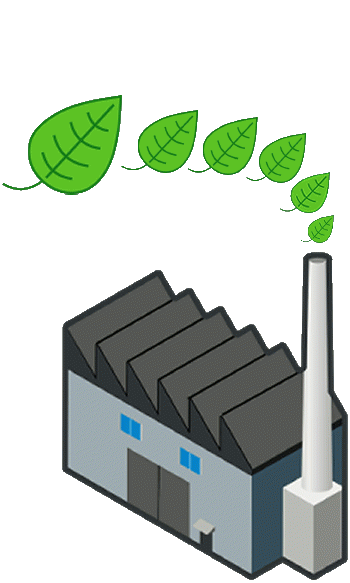If you're already familiar with Bioenergy, the bottom of the page is where the good stuff is!
Bioenergy offers a green alternative to fossil fuel. But, it has big issues.
When trees/crops ("biomass") grow, photosynthesis captures CO2 in them. When that biomass is burned as fuel the CO2 is released; growing replacement biomass re-captures that amount of CO2. Effectively the CO2 is locked into a loop - which is good, right?
Biomass has four main problems.
First, growing biomass needs land, water and agricultural resources that usually cannot be spared from agrifood. CarbonGood should be able to help with that.
Second, most essential fossil-fuelled infrastructure cannot be converted to use biomass easily, or often at all. That infrastructure will continue to burn fossil fuel and emit CO2. CarbonGood should be able to help with that too.
Third, biomass - even as pelletized wood - has a low energy density compared to fossil fuels so far more is required. Biomass also cannot be piped, making supply logistics much more challenging (and with a high carbon footprint).
Fourth, while biomass locks a fixed mass of CO2 into a loop, that loop is fixed - it isn't actually
decreasing the overall amount of CO2 (which causes global warming) in
our atmosphere. Because so many other emitters continue to burn fossil
fuels, emitting NEW CO2, the overall CO2 in the atmosphere continues to rise,
and so does global warming.
For biomass to really fight global warming, it needs to do more.
It needs to become carbon-negative.
Which brings us to BECCS - BioEnergy with Carbon Capture & Storage.
What's the deal with BECCS?
By adding CCS - Carbon Capture & Storage - bioenergy potentially becomes much more attractive.
Because we're still capturing atmospheric CO2 in the biomass, but in BECCS when that biomass is burned the CO2 instead of re-entering the atmosphere is captured and removed from the environment - replacement biomass embodies NEW CO2, so the process has become carbon-negative.
The question remains of what to do with the captured CO2 - the main option today is burying it, although a few technologies are emerging to convert the CO2 to something more useful, such as plastics.
The carbon-negative aspect of BECCS makes it potentially a major contributor to CO2 reduction.
Potentially.
"Potentially"? What's the problem...?
Bioenergy is simple enough in concept, although as we've seen real-world application is quite limited as many fossil fuel facilities aren't (economically and/or technically) convertible
That's not actually the (main) problem.
Putting aside the issue of cultivation space the core problem in BECCS is that our existing carbon capture & storage - CCS - solutions are cumbersome and expensive and work in very few locations.
Conventional CCS demands particular geology and sophisticated technology to separate the CO2 for injection into the ground, and is only remotely worthwhile for very large emitters. It's extremely telling that, of the millions of carbon emitters worldwide, only 21 "large-scale" CCS facilities are operational. That won't even DENT our carbon trajectory. And the CCS picture is actually deteriorating - as this article highlights.
Other potential uses for the CO2 are still largely in their infancy and also high-tech; most still need the CO2 separating from the emission stream to use it, adding complexity, and many are likely to remain too expensive and too technically-demanding for anything other than large-scale emitters in technically-advanced and wealthy societies.
For BECCS to become widely viable much cheaper and simpler CCS is needed.
Like CarbonGood .
CarbonGood ♥ BECCS
CarbonGood is simple, cheap, quickly deployable and needs no CO2 separation so is ideal for widescale BECCS application.
In stark contrast to conventional CCS, by converting CO2 directly to a valuable product it should be cash-positive, adding an income stream for BECCS facilities and users.
And because that product is a long-term stable solid, and can be compacted for high-density "brick" storage, the CO2 is permanently sequestered delivering a genuinely carbon-negative solution.
Carbon-negative + cash-positive = a good thing, right?
Because CarbonGood could be retro-fitted to any emitter, anywhere, it's ideal both for new Bioenergy facilities and for converted ex-fossil-fuelled ones.
And because CarbonGood is fully-scalable, it's compatible with virtually anything; farms or landfills using biogas; wood processing plants burning sawdust or offcut; power generation from bio-diesel; agrifood processors burning crop waste; or anywhere else using Bioenergy, of ANY type.
And because CarbonGood IS low-tech, cheap to build (and potentially cash-positive in operation), and quickly-deployable anywhere, it should allow BECCS to be implemented FAST enough and AT SCALE enough to actually impact our carbon trajectory.
CarbonGood of course remains compatible with any fossil-fuelled facility, AND with any hybrid facility using both fossil-fuel and bioenergy.
